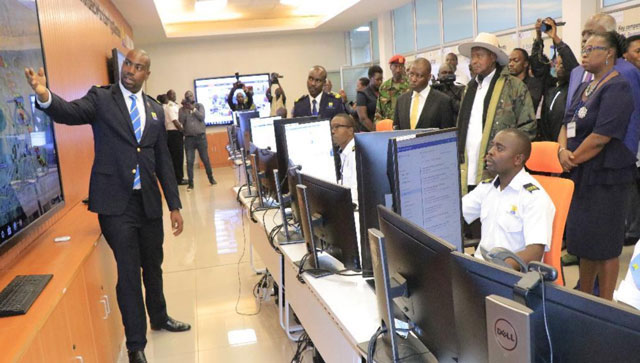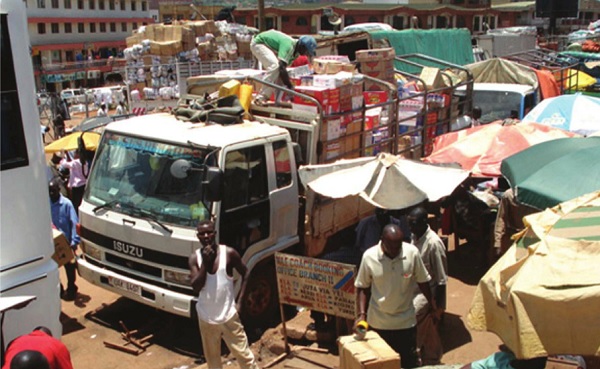
The African Continental Free trade Area (AfCFTA) Agreement: How is URA Customs positioned to champion this agenda?
GUEST COLUMN | DICKSONS KATESHUMBWA | The Uganda Revenue Authority (URA) Customs department was central in the negotiations that culminated in the African Continental Free Trade Agreement (AfCFTA).
Whereas legally binding effective on 30th May, 2019, the AfCFTA was launched on 7th July, 2019 at an extra-ordinary summit of the Assembly of African Union Heads of State and Government in Niamey, Niger. The launch of the “operational phase” of the landmark free trade accord, will create what leaders expect to be the world’s largest free trade area.
The Niamey summit launched the operational phase of the agreement, instruments and tools that African Ministers of Trade (AMOT) agreed on in an earlier meeting in Addis Ababa, Ethiopia. Actual trading is envisaged to begin in July 2020 after conclusion of implementation requirements by the Secretariat and State parties.
The AfCFTA Agreement provides for Phase I and Phase II issues for negotiation. Thus far, phase I issues including agreement on trade in goods, has been concluded. It is the Protocol on trade in goods that is being considered here.
On 21st March, 2019, the agreement establishing the AfCFTA marked one year of existence. It was opened for signature on 21st March, 2018 at an African Union Heads of State and Government meeting in Kigali, Rwanda.
“The African Free Trade Agreement is a delicious African dish: the ingredients have been assembled, the chefs are in the kitchen and the guests are hungry – cooking should not take too long.”
– ITC Executive Director @AranchaGlezLaya at the closing plenary of @wef #af19 pic.twitter.com/nWr6Wg7gx6
— International Trade Centre (@ITCnews) September 6, 2019
In Kigali, 44 African Union Member States signed the historic agreement. The number rose to 49 at the July 2018 Nouakchott, Mauritania summit. Three more signatures were added during the February 2019 Addis Ababa summit, bringing the figure to 52. So far, 24 counties have ratified the agreement to become State Parties and this includes Uganda.
AfCFTA facilitates overcoming the historic fragmentation and isolation of its economies and opens up huge commercial opportunities.
What opportunities are there?
AfCFTA will create one market for Africa, covering a market of 1.2 billion people and a gross domestic product of $2.5 trillion, across 55 African Union member states. It will be the world’s largest free trade area since the formation of the World Trade Organization. It is also a highly dynamic market. Africa’s population is projected to reach 2.5 billion by 2050. Then, it will comprise 26% what is projected to be the world’s working population in an economy estimated to grow twice as rapidly as that of the developed world.
With average tariffs of 6.1%%, businesses currently face higher tariffs when they export within Africa than when they export outside the continent.
AfCFTA will progressively eliminate tariffs on intra-African trade.
July 7 from now on will be officially celebrated as the Day of African Integration in commemoration of today’s historic operationalisation of the #AfCFTA, as we start the journey thr economic integration vision of the #AfricaWeWant pic.twitter.com/hGf0djU9X8
— Moussa Faki Mahamat (@AUC_MoussaFaki) July 7, 2019
The United Nations Economic Commission for Africa estimates that AfCFTA will boost intra-African trade by 52.3% by eliminating import duties, and to double this trade if non-tariff barriers are also reduced.
In July 2020, traders across Africa will benefit from preferential trading arrangements linked to AfCFTA as long as the trade relations involve the 24 or more countries that would have deposited instruments of ratification as well as conform to agreed provisions on rules of origin governing trade.
Preferential trade will only be possible based on the rules of origin and AfCFTA preferential certificate of origin. Exporters will acquire these from URA Customs.
Opportunities for SMEs
AfCFTA will enable players to access regional and subsequently overseas markets.
It will ease supply of inputs to larger regional export companies. For example, large automobile manufacturers in South Africa source inputs, including leather for seats from Botswana and fabrics from Lesotho, under the preferential Southern African Customs Union trading bloc.

Opportunities for Africa’s women in trade
Women are estimated to be 70% of informal cross border traders in Africa.
Therefore, reducing tariffs enables informal traders to operate through formal channels, which offer more protection.
This can be further enhanced by simplified trading regimes for small traders, such as the Simplified Trade Regime in the Common Market for Eastern and Southern Africa (COMESA), and the Simplified Trade Regime of the East African Community (EAC) which provides a simplified clearing procedure alongside reduced import duties that provide particular help to small-scale traders.
How has URA Customs facilitate the AfCFTA agenda?
We are determined to support this process together with other government institutions. Already, a number of instruments under the AfCFTA agreement have been adopted for implementation. Of particular interest to Customs are the following annexes to the protocol on Trade in goods: The Schedules of tariff concessions; Rules of Origin; Customs Cooperation and Mutual Administrative Assistance; Trade facilitation; Transit Trade and Trade facilitation; Non-Tariff barriers(NTB);Technical barriers to trade (TBT);Sanitary and Phyto-sanitary measures (SPS). The first seven were achieved with great input from Customs considering that they directly impact on trade facilitation through customs.
What does AfCFTA mean from a Customs perspective?
- African businesses, traders and consumers will not pay tariffs on a large variety of goods that they exchange.
- Traders constrained by non-tariff barriers, including overly burdensome customs procedures or excessive paperwork, will have a mechanism through which to seek the removal of such burdens
- Cooperation between customs authorities over product standards and regulations, as well as trade transit and facilitation, will ease movement of cargo.
- Easing of trade between African countries will facilitate the establishment of regional value chains in which inputs are sourced from different African countries to add value before exporting externally
If Uganda is to benefit from AfCFTA opportunities, the following ought to be done urgently.
- Sensitisation of traders and stakeholders
- Preparation of the required legislation domestically or at the regional level to operationalize the agreement
- Production of the required instruments like the certificates of origin, and other documents required under the rules of origin, and transit trade will have to be done in accordance with the specimen provided under the agreement.
- Development of an implementation strategy by the various institutions and agencies involved in international trade.
I conclude by saying that Uganda is ready to host the 11th African Union Sub Committee of Directors General of Customs Conference from 16th – 20th September 2019, at Speke Resort Munyonyo.
*****
 Dicksons Kateshumbwa is Commissioner Customs, Uganda Revenue Authority | twitter @Kateshd
Dicksons Kateshumbwa is Commissioner Customs, Uganda Revenue Authority | twitter @Kateshd
 The Independent Uganda: You get the Truth we Pay the Price
The Independent Uganda: You get the Truth we Pay the Price





What are the tangible benefits realized to date from the Agreement and hos has COVID 19 affected this progress?